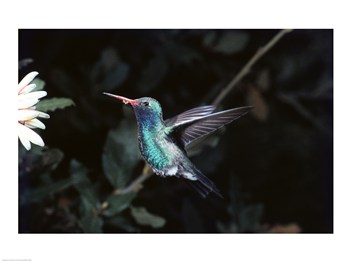Hummingbird Habitats
A hummingbird’s only natural habitat (the place where they live) is in the America’s. Their range is as far north as Alaska and as far south as Chile. Most hummingbirds live in the South America. (See the Hummingbird Habitat Maps by clicking the link on the left side of the screen.
There are over three hundred (300) types or species of hummingbirds making hummingbirds the second largest species of bird in the Western Hemisphere. Ecuador has the largest number of types or species of hummingbirds. There are more than 50 types or species of hummingbirds that breed in Mexico, more than 15 types or species of hummingbirds that breed in the United States, and more than 3 types or species of hummingbirds that breed in Canada.
Many hummingbirds love the habitat of wooded and forested areas that have lots of flowers and well as in meadows and grasslands. There are also plenty of hummingbirds living quite well in large cities, cool areas, warm areas, places that get snow, and desert environments. Hummingbirds are usually looking for nectar to drink, bugs to eat, and a significant other to fly with.
Hummingbirds live at a variety of altitudes across their habitats. They will range anywhere between sea level to fourteen-thousand (14,000) feet above sea level in the Andes Mountains.
Most hummingbirds like the habitat of Central and South America and will stay here all year long. A few of them will travel north every year.
Ruby-Throated Hummingbirds will usually summer* east of the Mississippi River, while Allen Hummingbirds stay mostly one the west coast in California. Rufous Hummingbirds will fly as far north as Alaska, and Anna’s will go into Canada.
Try not to think of a hummingbird habitat as just a garden. When creating a hummingbird habitat think of it as creating a micro-habitat for hummingbirds. This is because you need to think about the type of garden you want to plant, the type of feeder you want to use, and the nectar to make. Also think of having places for hummingbirds to perch, bugs to eat, sun to fly in, and shade to rest in. Think of sheltered locations for mother hummingbirds to make a nest and have a baby hummingbird or two. And think of space for a hummingbird to fly around.
Hummingbirds are so used to people in their habitats that once they trust you, they will come right up to you. It is not unusual for a hummingbird to check out a person to see if any brightly colored clothing will produce nectar. Some hummingbirds will drink from a feeder right in your hands and will even perch on a still finger next to a feeder to drink.
Do not try to make a hummingbird habitat in a cage as it is illegal to do so and bad for the free willed hummingbird.
See different types of hummingbird habitats and report what hummingbirds live in your area with our Habitat Maps.
Note: *Northern Hemisphere Time.





